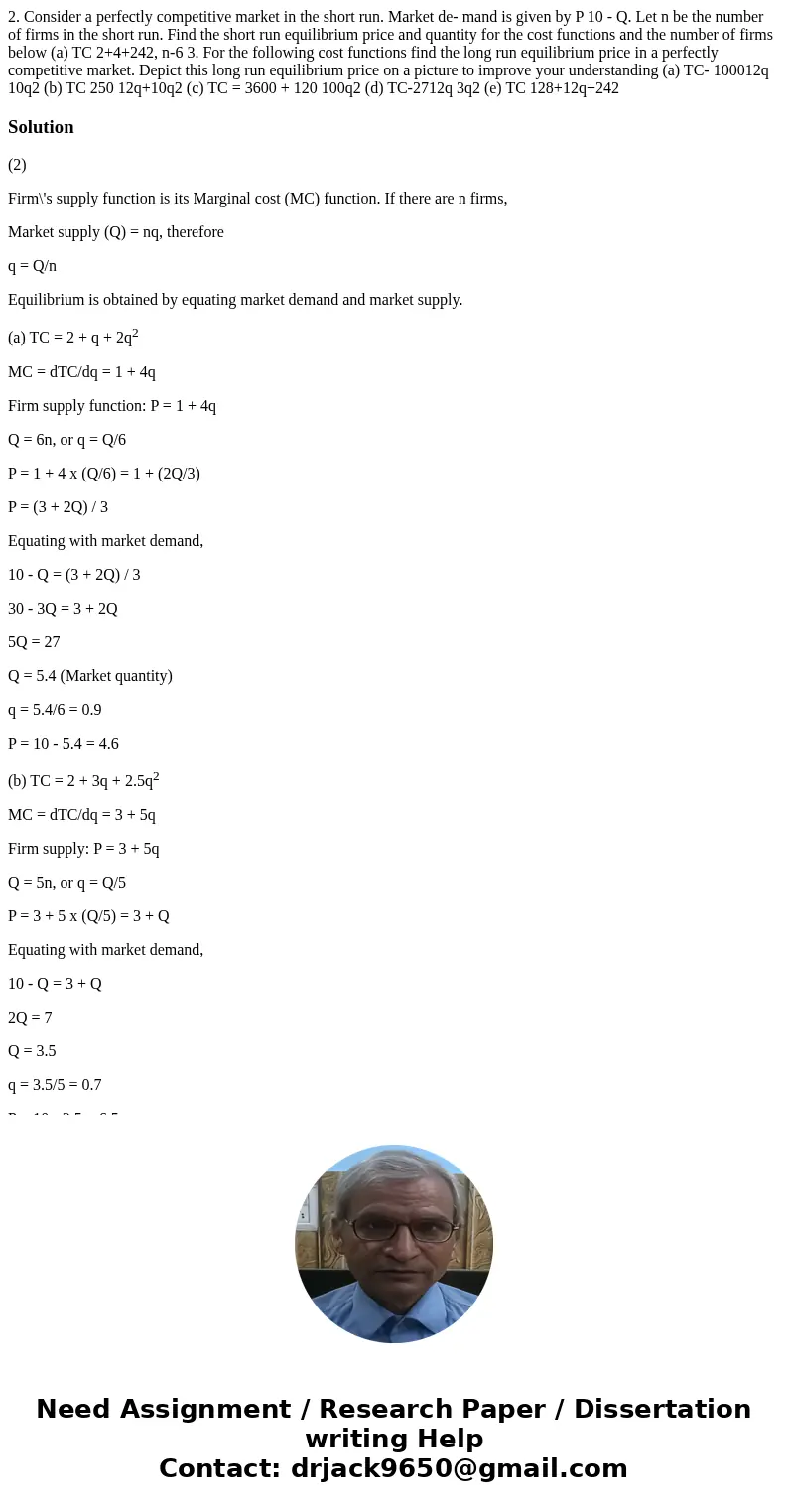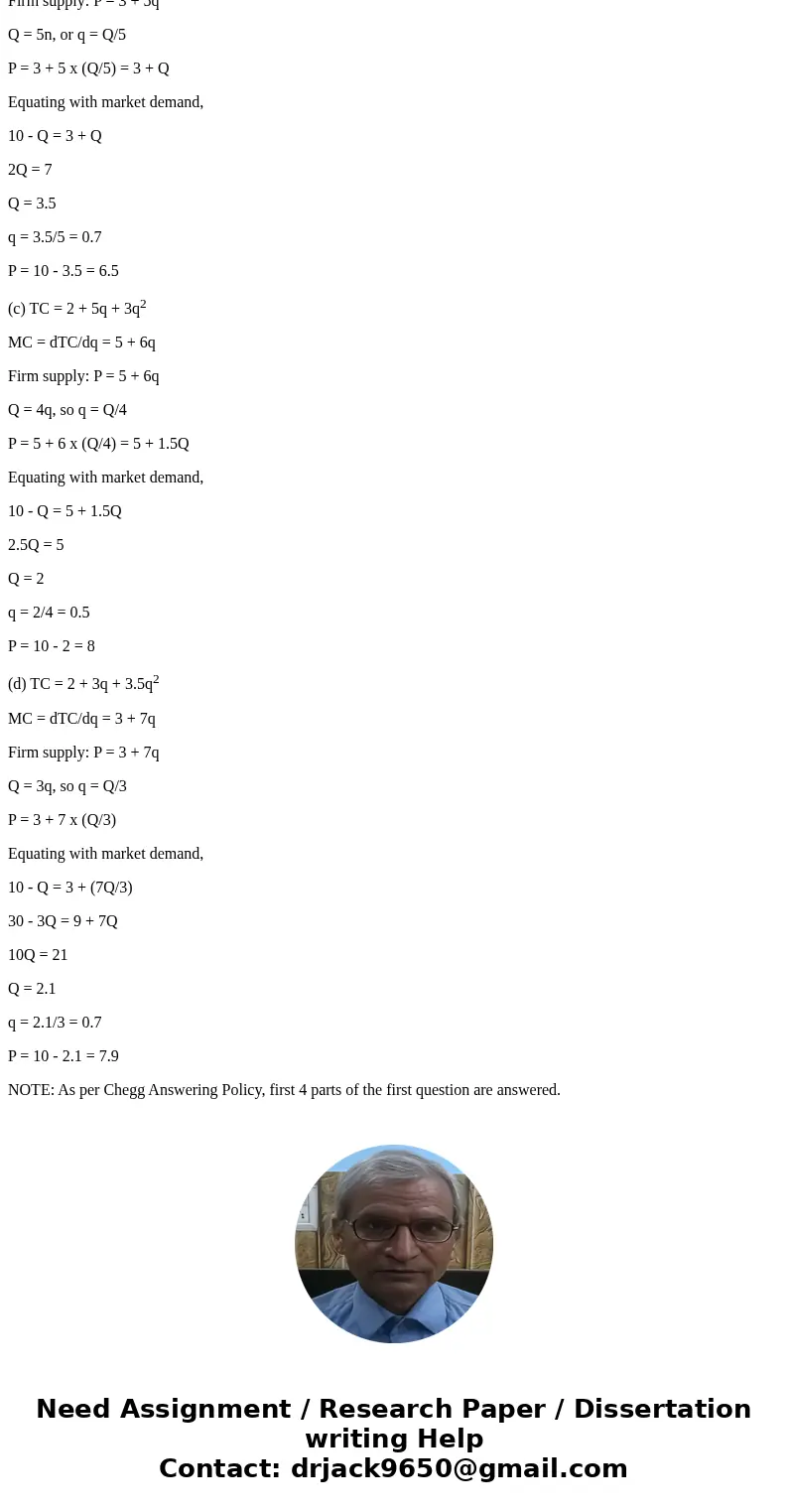2 Consider a perfectly competitive market in the short run M
Solution
(2)
Firm\'s supply function is its Marginal cost (MC) function. If there are n firms,
Market supply (Q) = nq, therefore
q = Q/n
Equilibrium is obtained by equating market demand and market supply.
(a) TC = 2 + q + 2q2
MC = dTC/dq = 1 + 4q
Firm supply function: P = 1 + 4q
Q = 6n, or q = Q/6
P = 1 + 4 x (Q/6) = 1 + (2Q/3)
P = (3 + 2Q) / 3
Equating with market demand,
10 - Q = (3 + 2Q) / 3
30 - 3Q = 3 + 2Q
5Q = 27
Q = 5.4 (Market quantity)
q = 5.4/6 = 0.9
P = 10 - 5.4 = 4.6
(b) TC = 2 + 3q + 2.5q2
MC = dTC/dq = 3 + 5q
Firm supply: P = 3 + 5q
Q = 5n, or q = Q/5
P = 3 + 5 x (Q/5) = 3 + Q
Equating with market demand,
10 - Q = 3 + Q
2Q = 7
Q = 3.5
q = 3.5/5 = 0.7
P = 10 - 3.5 = 6.5
(c) TC = 2 + 5q + 3q2
MC = dTC/dq = 5 + 6q
Firm supply: P = 5 + 6q
Q = 4q, so q = Q/4
P = 5 + 6 x (Q/4) = 5 + 1.5Q
Equating with market demand,
10 - Q = 5 + 1.5Q
2.5Q = 5
Q = 2
q = 2/4 = 0.5
P = 10 - 2 = 8
(d) TC = 2 + 3q + 3.5q2
MC = dTC/dq = 3 + 7q
Firm supply: P = 3 + 7q
Q = 3q, so q = Q/3
P = 3 + 7 x (Q/3)
Equating with market demand,
10 - Q = 3 + (7Q/3)
30 - 3Q = 9 + 7Q
10Q = 21
Q = 2.1
q = 2.1/3 = 0.7
P = 10 - 2.1 = 7.9
NOTE: As per Chegg Answering Policy, first 4 parts of the first question are answered.


 Homework Sourse
Homework Sourse